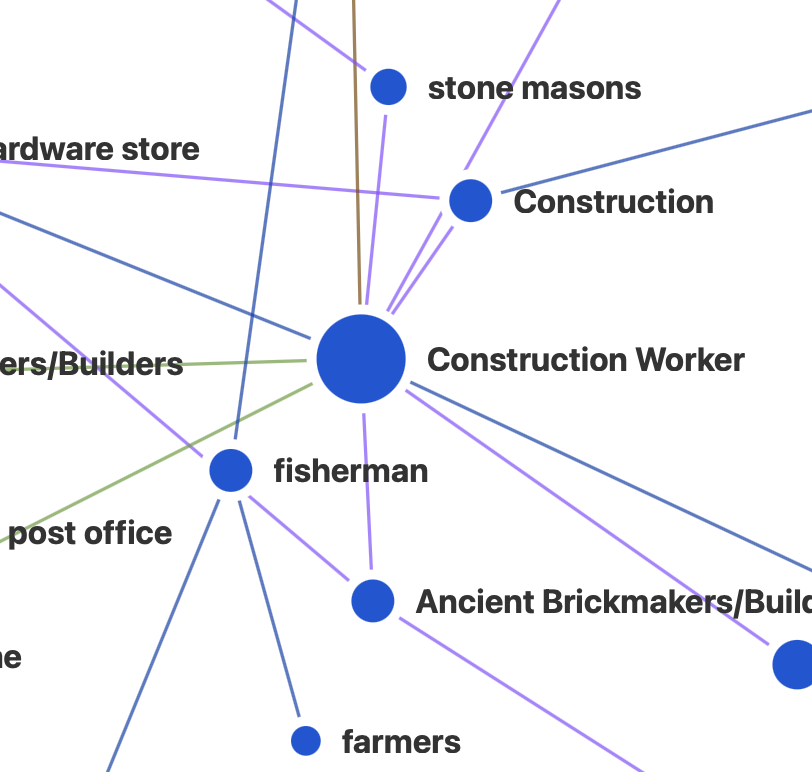
Should I choose this template?
Do you want your students to make connections between historical events and the modern day? Do you want them to see themselves and their community represented in, influenced by, and contrasted against history? The Past to Present network template supports students in making connections between the historical content that they are learning and things they see, do, and know of in their everyday lives by:
- Break through student’s modern perspective by identifying differences between the present and the historical past
- see connections to people in history by identifying similarities between the present and the historical past
Teachers used this network because students routinely struggled to break through their own modern assumptions to take historical perspective because the cultural and social norms seemed so different.
When should I use this template?
When you have content from history that has impact on modern life (or on another era in history)
What sources work best?
- Primary sources from both eras (e.g. images of Roman temples, coins, roads, along with images of modern day architecture that incorporates Roman elements, modern money, modern roads)
- Secondary sources that explain connections between historical eras and modern life
What’s the investment in time and effort for this network?
Time: Two class periods: one to add important elements from one historical era and discuss, one to add connected elements from the second historical era and discuss.
Teacher support: Teachers will need to
- understand the basics of Net.Create (node and edge entry). See this basic-data-entry video!
- how to add images to the network.
- how to toggle between network view and table view and sort columns in table view.
- how to use one network filter (the “?????” filter). See this ?????-filter video!
How should I use this template?
Network Details: What should my students and I be tracking?
For any network, students will track nodes (things) and edges (relationships between things), each of which will also have “attributes” (which include mandatory info like citations and optional info like extra notes).
Nodes (things being connected)
In this network, the nodes represent two things: elements of the modern world that students are interested in, and elements of the history they’re reading that compare to those modern elements.
- Ancient Civilization: A historical job or architectural style or law or cultural/social norm that is drawn from a social studies reading. For example, students might study different types of Greek columns, like the Doric columns that held up the roof at the Parthenon
- Modern American: A modern job or architectural style or law or cultural/social norm that students have encountered in their daily life. For example, students might note that a nearby bank uses neo-Classical architecture with Greek columns in it.
Edges (connection types)
In this network, the edges allow students to make more detailed connections between elements of the modern world and elements of their history reading.
- Cultural: A connection between an ancient and modern element that is cultural or artistic. For example, a student might note that the Doric columns on a nearby bank are artistic echoes of the columns from the Parthenon.
- Political: A connection between an ancient and modern element that is oriented toward politics or governance. For example, a student might note that the columns from the Parthenon represented Athenian government and a similar style can be seen on the White House.
- Social: A connection between an ancient and modern element that is oriented toward social interactions. For example, a student might note that the Colosseum in the Roman Empire and sports arenas in the modern world serve as a meeting place for social gatherings.
- Economic: A connection between an ancient and modern element that is economic or occupational. For example, a student might note that architects were important in both the modern U.S. and the ancient world
- Physical: A connection between an ancient and modern element that has an impact on the physical environment. For example, a student might note that multi-story apartments were a common living option in both ancient Rome and in the modern U.S.
What learning goals does this template support?
- D2.His.2.6-8. Classify series of historical events and developments as examples of change and/or continuity.
- D2.His.3.6-8. Use questions generated about individuals and groups to analyze why they, and the developments they shaped, are seen as historically significant.
What data literacy outcomes does this template support?
- Students will learn that data itself can change over time. While we sometimes consider data “static” in that it will not change, we often change the data itself in use, or through interpretation, or because it describes things that are constantly changing, such as historical norms.
- Students will learn to integrate individual data points and aggregate data patterns. Individual data points may inform certain questions, while patterns within and across datasets help answer others.
Resources for classroom use
Teacher Resources
- Classroom management recommendations
- Network-analysis learning Resources
- Simple Net.Create documentation
- Videos of new node/edge, table sorting, filters, etc.
- 5-moves-to-make video
- 1-pager lesson plan
- “Good questions to ask” guide for teachers
- What network-data moves (viz, tables, filters) to use as network gets big
Example lesson Modern Jobs/Ancient Roles, Roman Influence
Student Handouts
- “Good questions to ask” guide for teachers

More about this item
Dublin Core
